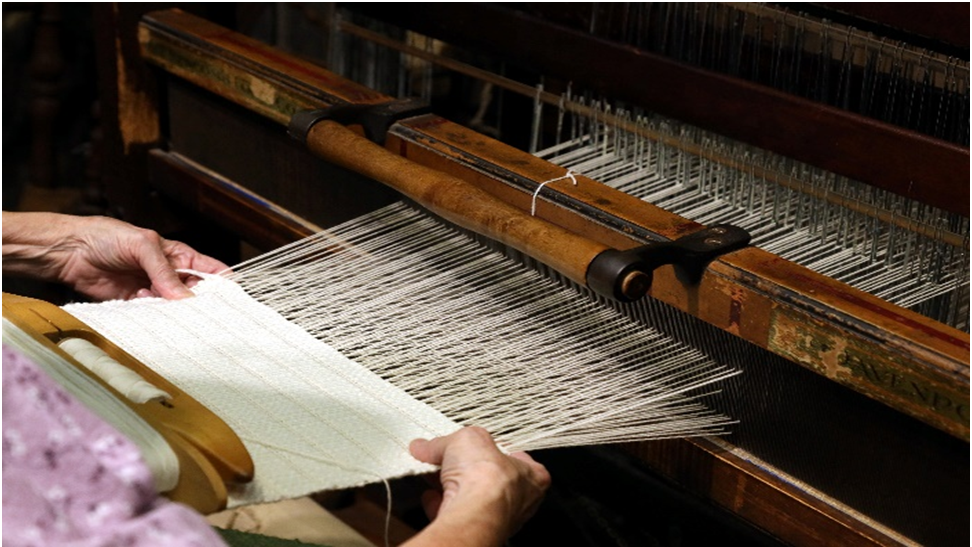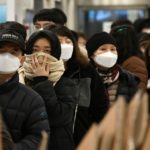
Fabric Weaving Process Explained
High-quality fabric production process is divided into several phases, each with its own purpose. High-quality fabric is made in three different varieties for clothing and textiles. Weaving, knitting, and non-woven fabrics are the three types of fabric manufacturing processes.
Spinning is the first stage of the process, whereas garment manufacture is the last. The spinning process is followed by the weaving and dyeing, printing, and finishing processes. As a result, weaving is the second stage in the creation of textiles, and it is also commonly employed for interweaving/interlacing fabrics.
The Weaving of Textiles
Weaving is the process of creating a textile by interlacing threads vertically and horizontally at correct angles. Various high-quality fabric looks can be achieved by modifying the way threads are woven. There are several pre-processes and pre-treatments for high-quality fabric that must be completed before beginning the weaving process. After the spinning process is completed, the yarns are divided into two types: weft yarn and wrap yarn. Both of these yarns are given different weaving processes. Let’s have a look at the tools and words that are utilized in the textile weaving process.
Step 1: Yarn from the spinning process is the first step.
After the spinning phase, the fabric/yarn is handed on to the textile weaving process. As described previously, this cloth is treated in phases for additional levels.
Step 2: Twisting and Doubling
The doubling method involves doubling the yarn to create a wrap for weaving, which eliminates thickness variances. Twisting is a method in textile weaving that binds fibers together in a continuous strand. The twist can be Z twist or S twist, with Z twist being to the right and S twist being to the left.
Step 3: Winding
The process of winding yarns from a bobbin/ring to an appropriate package is known as winding. It could be mechanical or electrical in nature. Cone and flanged bobbin packages are used to wind warp yarn. On police packets, however, weft yarn is wounded. Winding necessitates the creation of an appropriate yarn packet. Weft yarn, on the other hand, is wound into a package for a traditional loom and a cone package for a modern loom.
Step 4: Creeling
Creeling is the process of storing entire packages in a location where they can be unwound as part of the transfer procedure. Simply said, it entails the removal of empty packets and the replacement of them with full ones.
Step 5: Warping
Warping is the process of winding yarn from a cone bundle in a parallel pattern on a warp beam. It is necessary to ensure that the warp beam is constructed of higher-quality warp yarn; otherwise, weaving performance will be limited. It is ultimately necessary to provide a good warp beam. The purpose of warping is to prepare the weaver’s beam for installation on the weaving machine. Create a warp with any number of threads of the required length out of a limited number of warp threads. The above-mentioned threads should be arranged in the desired order.
Step 6: Sizing
Sizing is the process of covering warp yarn with a protective coating. As a result, yarn breakage during textile weaving is reduced. The most important role in the preparation of warp yarn for weaving, especially with cotton yarn, is sizing. Sizing is the process of applying an adhesive protecting covering to the warp threads before weaving them in. Warp yarns are able to withstand the varied pressures they face in the weaving machine.
Step 7: Weaver Beam Winding
Beaming is the process of winding all of the warp strands in a single winding operation on the weaving beam. A creel/warping beam can be used to wind the warp yarns. To disconnect groups of warp yarns, lease cords are inserted between the warp yarns.
Step 8: Drawing
To create high-quality fabrics with distinct structures, each thread must move in a precise order, which is why it is inserted in the slats of the warp stop and brought in thread by thread via the eyes of the heddle and the teeth of the reed. When weaving multiple textiles with the same structure on the same loom, the drawing in stage can be bypassed and each thread linked to the relevant warp thread that is ending directly in the loom. It is now feasible to draw in up to 200 threads per minute through the heddles, reed, and comb in one pass, thanks to current technology. Despite the highly automated technique, drawing in a whole beam takes 2.5 hours of labour.
Step 9: Looming
The tail end of the warp from the exhausted weaver beam is joined at the commencement of the fresh warp. It’s known as tying-in. As a result, if each end of the new beam is joined to its corresponding end on the old beam, the drawing mechanism may be eliminated. After the tying-in operation, all knots are drawn through the drop wires, heddles, and reeds. The loom is now ready to use.
Step 10:Weaving
When the weft yarn joins the warp, a high-quality fabric is generated, combining the raw material’s synthesis with the design and structure’s originality. The weaving is done on high-tech weaving looms using a sophisticated procedure that is carried out with the utmost care, in a controlled atmosphere, and with the weaving staff’s extensive knowledge. The looms can weave the simplest materials at 640 passes per minute, while the finest and most delicate high-quality fabrics take much longer. Greige refers to the unfinished fabric at this stage. Finally, the weaving is completed, and the shipping process will begin.
Conclusion
Small flaws typical of natural raw materials can be removed during visual inspections. The importance of skilled labor in obtaining the highest quality fabrics cannot be overstated. After greige fabric control, the high-quality fabrics are sent to the finishing department, where they will be given their final color, hand-feel, and visual appearance. If you want to learn more about fabrics, visit Create Fabrics online!








